
The once formidable power of labor unions has declined considerably in the United States. More than 20% of U.S. workers belonged to a union in 1983. Today, just over one in 10 U.S. workers are union members. While unions are virtually non-existent in some parts of the country, like Charleston, South Carolina, a number of urban areas remain union strongholds.
24/7 Wall St. reviewed the percentage of workers who belong to a union in U.S. metro areas from the online database Unionstats.com. At least 25% of workers in 14 U.S. metro areas are members of unions. The Springfield, Illinois area leads the nation by a large margin with a union membership rate of 37.1%.
[in-text-ad]
David Macpherson is the E.M. Stevens professor of economics and department chair at Trinity University, as well as one of the creators of Unionstats.com. In an interview with 24/7 Wall St., Macpherson attributed strong union membership to the concentration of public sector jobs as well as to the political attitude towards collective bargaining.
Click here to see the 14 cities with the strongest unions.
The lack of competition in the public sector makes it more union friendly. “If you raise taxes to pay higher pension benefits, that’s not going to drive [the government] out of business,” Macpherson said.
Nationally, 35.2% of public sector workers are union members, more than five times the 6.7% private sector union membership rate. More than 20% of workers in eight of the 14 cities with the highest union membership rates are employed by the public sector. By contrast, 15.4% of workers nationwide are employed by the public sector.
Most metropolitan areas on this list are located in states that have provided more favorable environments for unions. Only three of the 14 metropolitan areas are states that have passed right-to-work laws. Under these laws, workers cannot be required to pay union dues if they are non union members. All 11 metropolitan areas where 1% or less of all workers are unionized are in right-to-work states.
There are benefits to union membership. A typical union member nationwide earns $980 per week, versus the median weekly wage of $776 of non-union workers. The typical worker earns more than the national median wage in the nine of the 14 highly unionized metropolitan areas. While a number of factors determine wages in a given area, the high unionization in these cities likely contributes at least partially to higher wages.
Black Workers, Unions, and Inequality, a study published this August by the Center for Economic and Policy Research, found that largely because black workers are more likely to be unionized than any other race or ethnicity, the decline in unionization has contributed to overall wage inequality. The report argues that attacking unions can have a disproportionately large impact on black Americans. Not only do black workers benefit more than most workers from union membership, but also the states in which union membership is declining the most are primarily in the southern U.S., where a disproportionately large share of black Americans live.
According to the labor department, workers with a high school diploma but not a college degree are among the most likely beneficiaries of union memberships. This particular group tends to be relatively large in the 14 cities on this list, where high school attainment rates tend to be above average but college attainment rates tend to be lower than in most U.S. cities.
Based on figures published by Unionstats.com, an online union membership and coverage database, 24/7 Wall St. identified the metropolitan areas with the highest and lowest union membership as a percentage of the total workforce. The database, which analyzes Bureau of Labor Statistics’ (BLS) Current Population Survey, provides labor force and union membership figures in both the public and private sectors, including manufacturing and construction. Additionally, 24/7 Wall St. reviewed annual average unemployment rates for each state from the BLS, as well as income and poverty data from the 2014 American Community Survey, produced by the U.S. Census Bureau.
These are the cities with the strongest unions.

14. Bremerton-Silverdale, WA
> Pct. of workers in unions: 25.1%
> Union workers: 19,843
> Unemployment rate: 5.9%
Government workers at the state, local, and federal level are far more likely to belong to a union than workers in the private sector. In Bremerton, more than half of public sector workers are in unions compared to 9.1% of private sector workers. In the metropolitan area, 36.8% of all workers are employed in the public sector, considerably more than the 15.4% workers nationwide employed in government. Since such a high share of Bremerton’s workforce is in the public sector, and such a large share of the metro’s public sector workers are unionized, it is unsurprising that the area has relatively high union membership overall.
[in-text-ad]

13. Vallejo-Fairfield, CA
> Pct. of workers in unions: 26.0%
> Union workers: 38,732
> Unemployment rate: 5.6%
On a national level, 15.4% of all workers are employed in the public sector. In Vallejo, 22.0% of workers hold local, state, or federal government jobs. With one of the highest union membership rates and no right-to-work laws, California is one of the most union-friendly states. Both the metropolitan’s private and public sector workers are significantly more likely to be in unions than their counterparts nationwide. In Vallejo, 55.4% of all government workers and 17.7% of all private sector workers are in unions. This compares to nationwide shares of 35.2% and 6.7%, respectively.
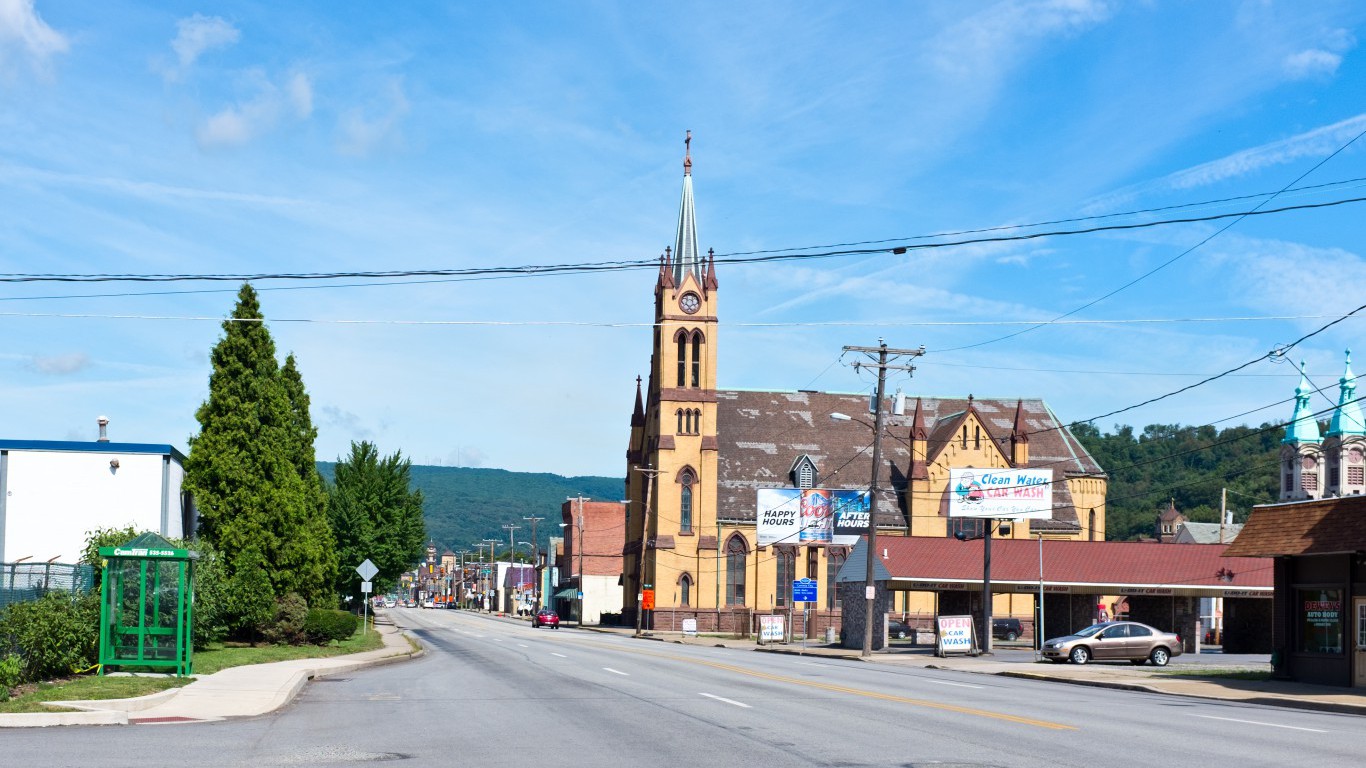
12. Johnstown, PA
> Pct. of workers in unions: 26.1%
> Union workers: 17,955
> Unemployment rate: 6.8%
Public education and health workers are among the two groups most likely to have strong union representation. Roughly 68,800 people in Johnstown, or about 32% of workers, are employed in education, health care, and social assistance positions. This is a much larger share than the national proportion of just 23%. Public sector workers in general are much more likely to be in unions, and this is particularly the case in Johnstown, where 73% of the area’s government workers are unionized.
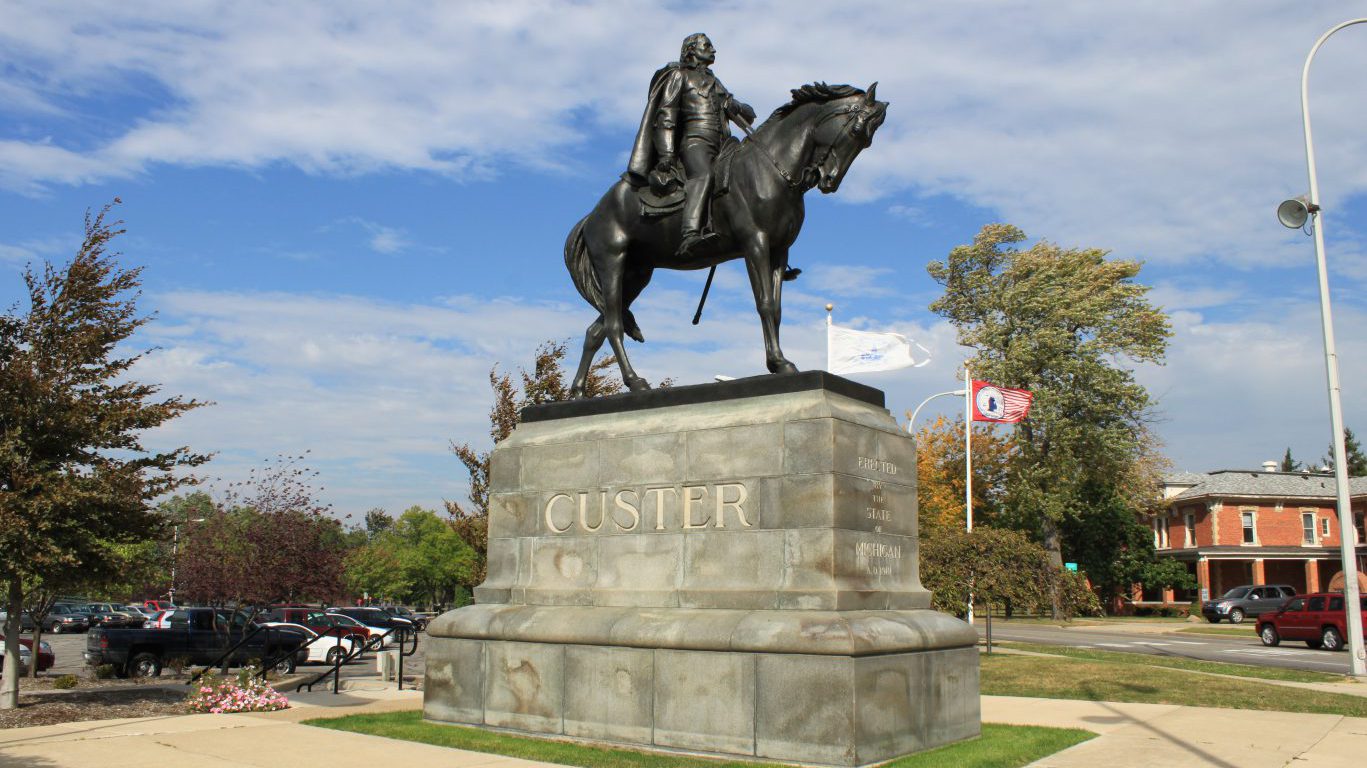
11. Monroe, MI
> Pct. of workers in unions: 26.4%
> Union workers: 21,818
> Unemployment rate: 3.7%
State and local laws can undermine or support unions and union membership. Lawmakers in Michigan — a state traditionally at the center of the heavily unionized U.S. auto manufacturing industry — passed a right-to-work law, which took effect in March 2013. The law prohibits labor contracts from making union dues a condition of employment. Recent, sharp declines in union membership across the state have been attributed to the law. Monroe, however, remains a union stronghold with more than one-quarter of workers belonging to a union.
[in-text-ad]
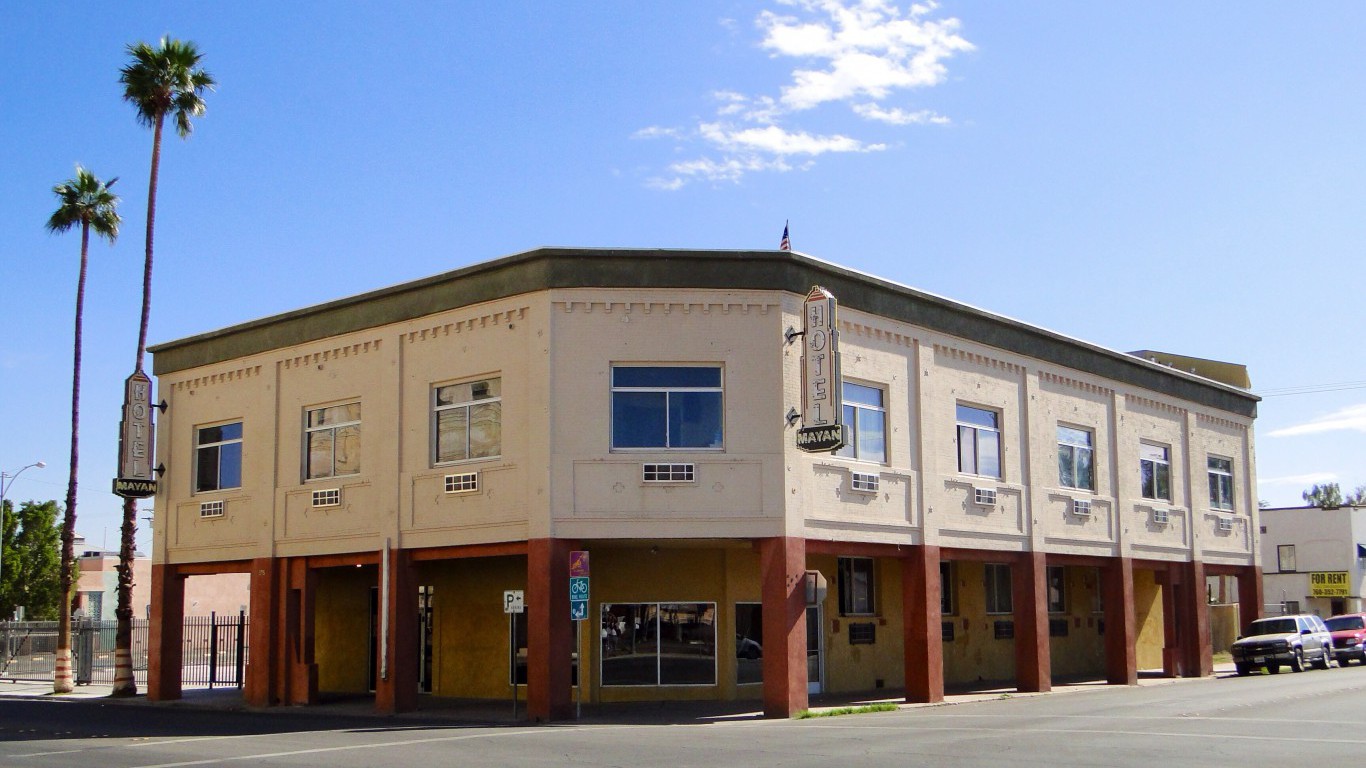
10. El Centro, CA
> Pct. of workers in unions: 28.6%
> Union workers: 22,410
> Unemployment rate: 23.2%
Wages are determined by a host of factors. By holding benefits and salary levels to a certain standard, strong union presence often corresponds with higher wages, even among non-union jobs. But while household incomes are at least slightly above average in most union strongholds, incomes in El Centro are exceptionally low. The typical area household earns less than $40,000 annually, and the poverty rate of 23.7% is among the highest in the country. El Centro’s remarkably high unemployment rate of 23.2% is also by far the highest in the nation. It may be that union members have managed to hold on to their jobs better than others, driving up union membership as a share of total employment.

9. Ocean City, NJ
> Pct. of workers in unions: 29.0%
> Union workers: 6,524
> Unemployment rate: 9.2%
Of Ocean City’s roughly 22,000 workers, 22.5% are employed in the public sector compared to 15.4% of workers nationwide. Public sector workers are more than three times as likely to be unionized than workers in the private sector. In Ocean City, the difference is even greater. About 80% of the area’s public sector workers are unionized, while 14% of the seaside resort city’s private sector workers are members of an organized labor group.
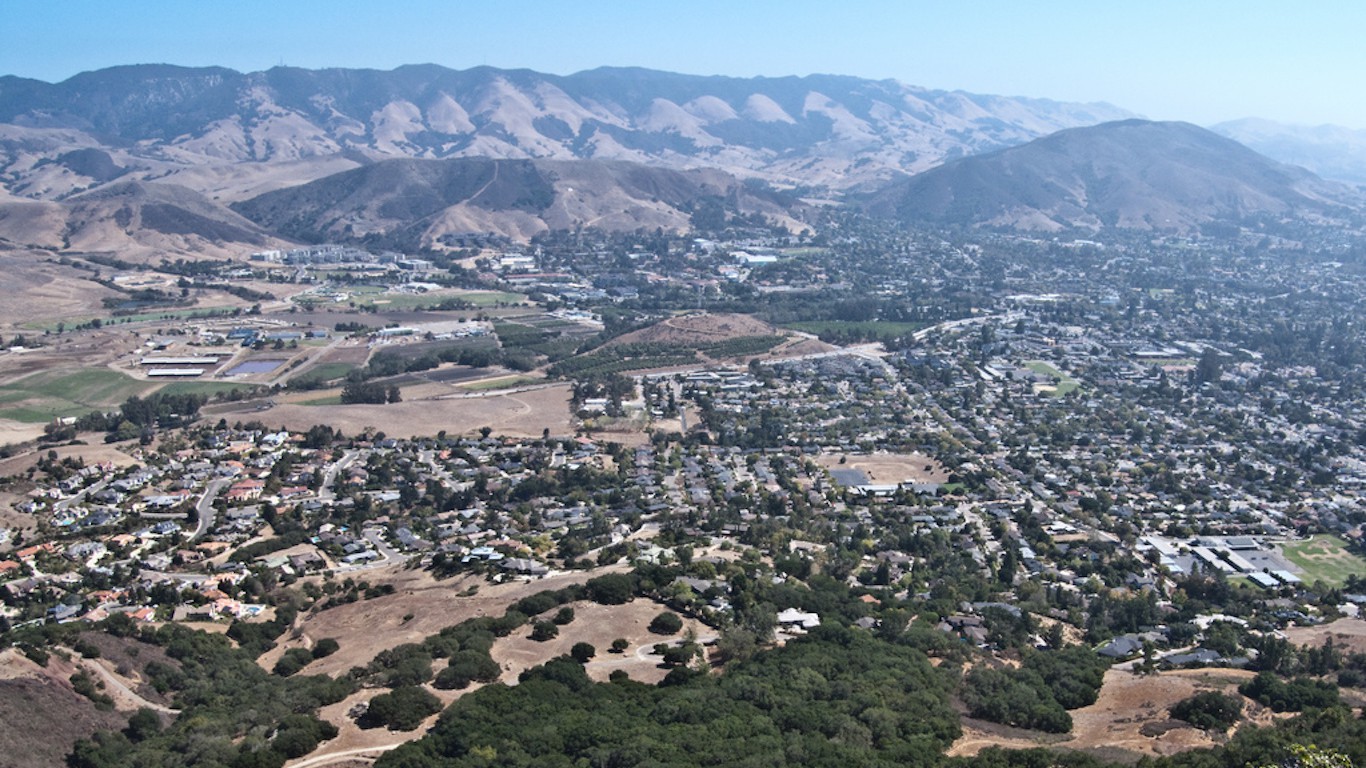
8. San Luis Obispo-Paso Robles-Arroyo Grande, CA
> Pct. of workers in unions: 29.1%
> Union workers: 20,698
> Unemployment rate: 4.2%
Located on the coast of union-friendly California between Los Angeles and San Francisco, San Luis Obispo has among the most unionized workforces in the country. While 11.1% of the country’s workers are union members, 29.1% of the metro area’s workers are unionized. While many factors determine high or low incomes, Metropolitan areas with greater union representation tend to have higher wages. The typical San Luis Obispo household earns $63,474 a year, about $10,000 more than the typical American household. Groups such as the left-leaning research group Economic Policy Institute argue that a high share of union jobs in an area raises wages even among non-union jobs.
[in-text-ad]

7. Topeka, KS
> Pct. of workers in unions: 29.2%
> Union workers: 27,812
> Unemployment rate: 4.2%
Based on Topeka’s high union membership rate of 29.2%, the city is a union stronghold compared with other U.S. cities. Kansas as a whole, however, is not especially union friendly. The state has passed a number of so-called right-to-work laws. Unlike many other cities with the highest shares of union members, Topeka also has an exceptionally low percentage of workers employed in the public sector, at 12.5%. By contrast, 15.4% of workers nationwide are employed in the public sector.
Workers who have completed high school but not college are among the most likely beneficiaries of unionization in an area. Adults living in Topeka have above average high school attainment compared to other U.S. cities, but below average college attainment.

6. Duluth, MN-WI
> Pct. of workers in unions: 29.9%
> Union workers: 29,971
> Unemployment rate: 5.6%
In 2011 Wisconsin Governor Scott Walker signed an anti-union law, which raised health and retirement plan contributions for government workers, many of whom are unionized. It appears the governor achieved his goals with this legislation — Walker credited the bill for saving billions of dollars in public expenses. At the same time, the number of union workers across the state has dropped considerably. Duluth, located on the Minnesota-Wisconsin border, has weathered the setback to unions relatively well. Approximately 30% of workers in the area belong to a union, nearly the highest such percentage nationwide.

5. Carbondale-Marion, IL
> Pct. of workers in unions: 30.5%
> Union workers: 22,815
> Unemployment rate: 6.0%
Most metropolitan areas with relatively high union representation are located in union friendly states — as is Carbondale. Illinois is one of the most friendly to organized labor in the country. More than 15% of state workers are union members, one of the highest shares in the country. Carbondale’s workforce is even more unionized. Slightly more than 30% of the metro area’s 75,000 workers belong to a union, including 73.4% of the area’s public sector workers. This is likely at least partially due to the extremely high 40% share of area workers employed in education and public health. Both industries tend to be heavily unionized.
[in-text-ad]
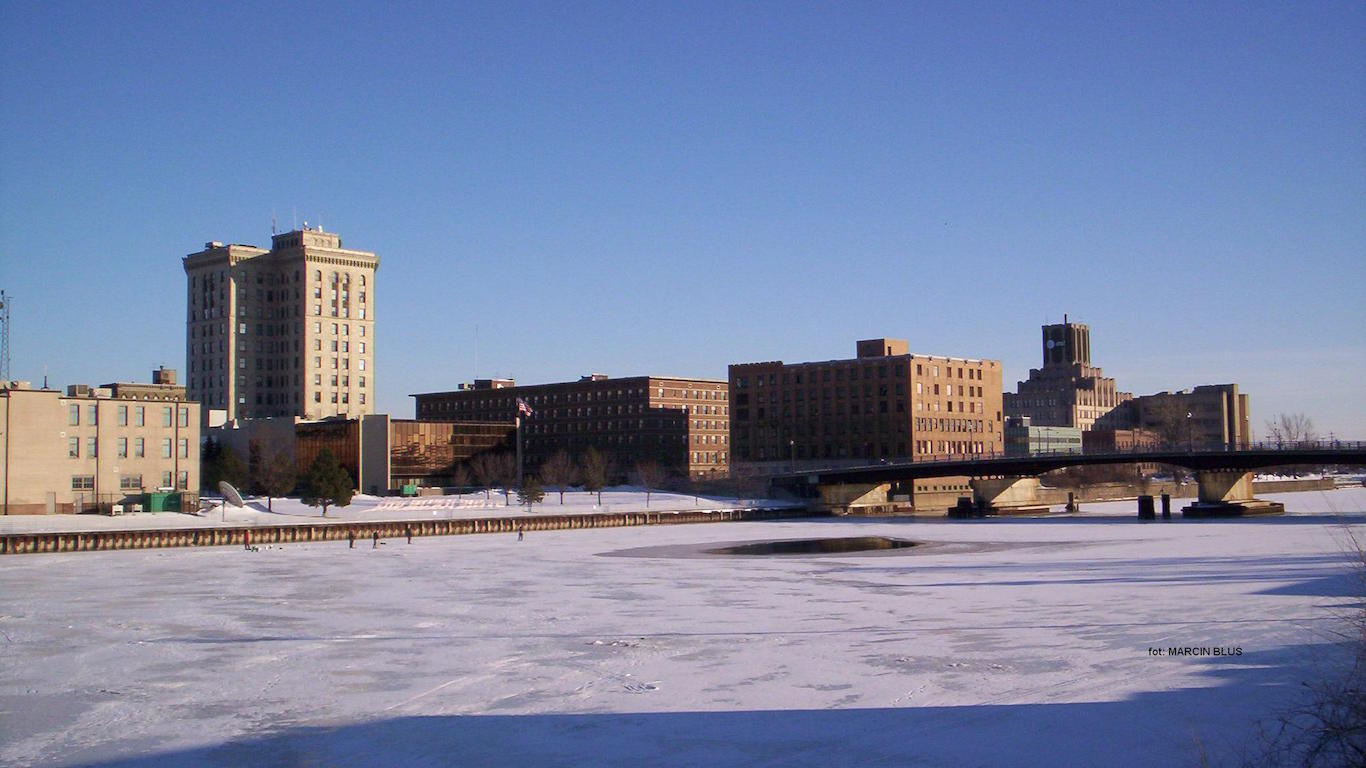
4. Saginaw, MI
> Pct. of workers in unions: 32.1%
> Union workers: 19,903
> Unemployment rate: 4.3%
The U.S. auto industry — and its unions — have been in a decline for many years. While Saginaw’s recent economic history mirrors the national trend, its manufacturing sector and its unions remain relatively strong. Saginaw’s manufacturing industry includes major regional employers such as transportation equipment manufacturer Nexteer Automotive. The sector employs 14.6% of the metro’s workforce, one of the highest such shares of any metro area.
Workers who have completed high school but do not have a college degree typically benefit most from a strong union presence in an area. Like most cities on this list, Saginaw’s adult population has an above average high school attainment rate compared to other U.S. cities but a below average college attainment rate.

3. Colorado Springs, CO
> Pct. of workers in unions: 34.0%
> Union workers: 79,971
> Unemployment rate: 4.4%
Slightly more than one-third of Colorado Springs’ workers are union members, three times the national share of 11.1% of workers. While union membership tends to be significantly higher in the government sector, it is the private sector in Colorado Springs that is driving up the area’s union membership. More than 25% of all private sector workers in the metro area are union members, far above the 7.4% of nationwide private sector workers who are union members.
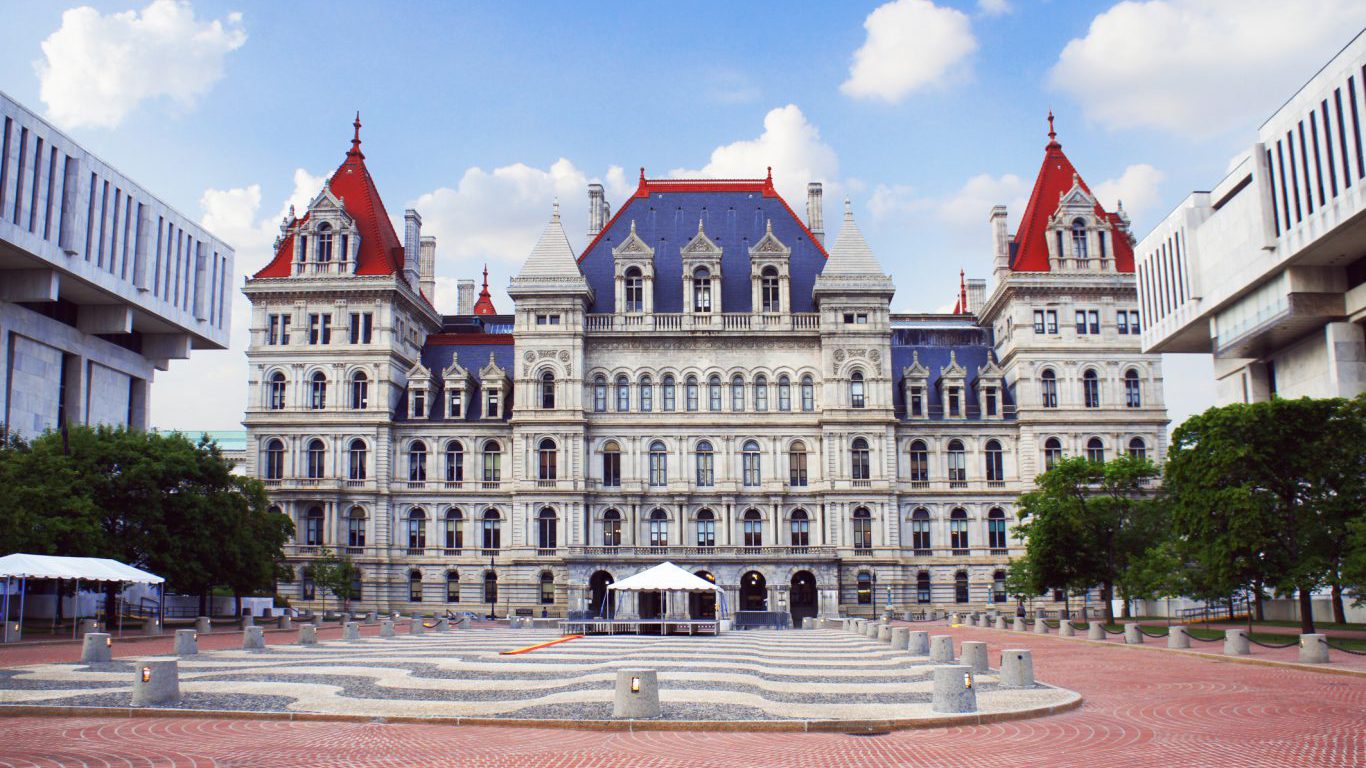
2. Albany-Schenectady-Troy, NY
> Pct. of workers in unions: 34.5%
> Union workers: 128,797
> Unemployment rate: 3.9%
While union membership has declined across the nation, it has risen in the Albany area from 29.3% of workers in 1986 to its current level of 34.5% of workers — the second highest share of any U.S. metro. The area is home to some of the largest and most powerful unions in the country, including the Civil Service Employees Association (CSEA), New York State Public Employees Federation (PEF), and New York State United Teachers (NYSUT). Notably, each of these unions principally serves public sector employees, who are considerably more likely to belong to unions than private sector employees. In the Albany area, 27.1% of workers are employed in the public sector, almost double the national average percentage.
[in-text-ad]
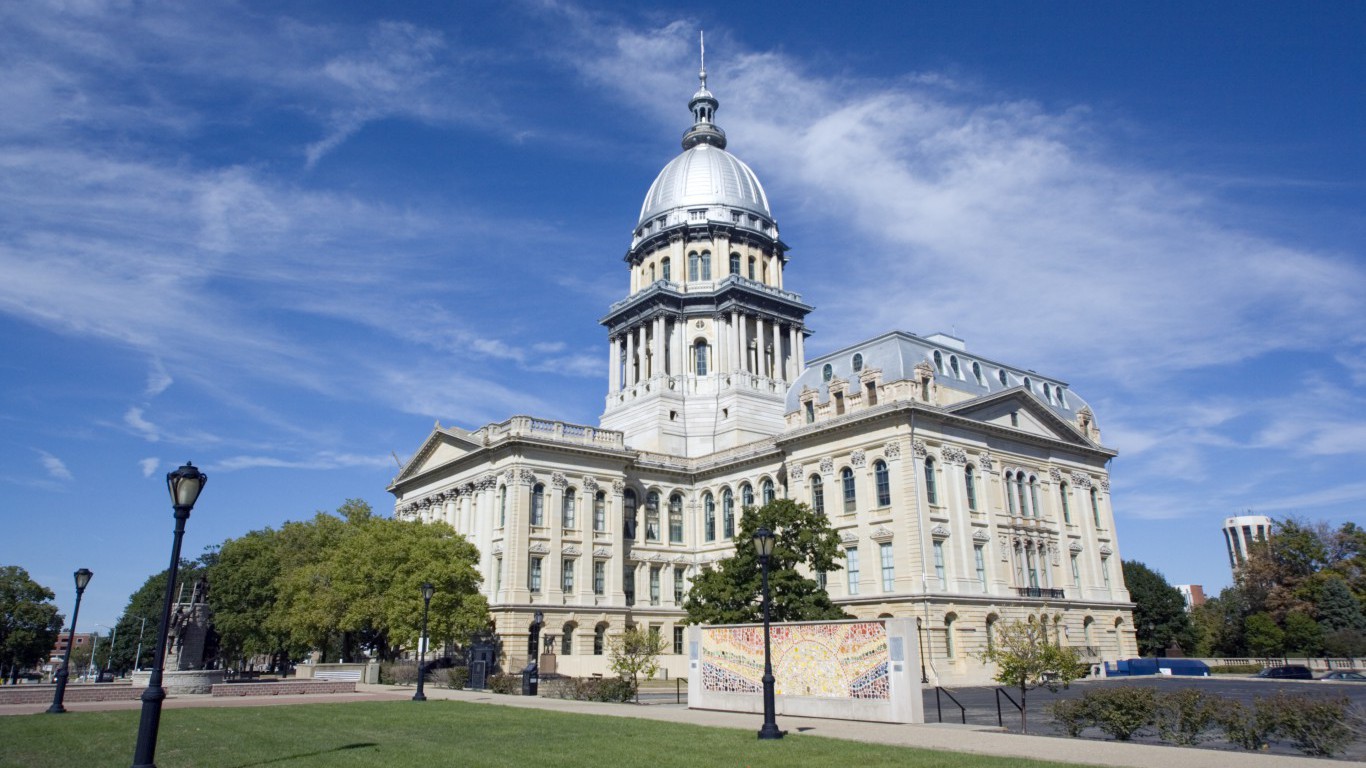
1. Springfield, IL
> Pct. of workers in unions: 37.1%
> Union workers: 50,757
> Unemployment rate: 4.8%
No U.S. city has a higher share of workers who belong to a union than Springfield. The high union membership rate of 37.1% is partially due to the area’s high share of public sector workers — public sector workers are far more likely than private sector workers to be union members. The public sector employs 23.6% of the area’s workforce, one of the highest such percentages among U.S. metro areas and considerably higher than the comparable national share of 15.4%.
There are also a number of large unions based in the region. IBEW Local 193, a branch of the International Brotherhood of Electrical Workers, is based in Springfield. The Springfield Education Association, which consists of approximately 1,200 workers, as well as Teamsters, a union of freight, warehouse, and construction workers, also have a significant presence in the area.
Thank you for reading! Have some feedback for us?
Contact the 24/7 Wall St. editorial team.




